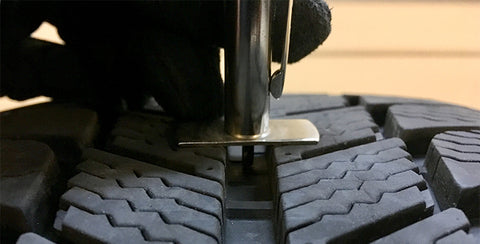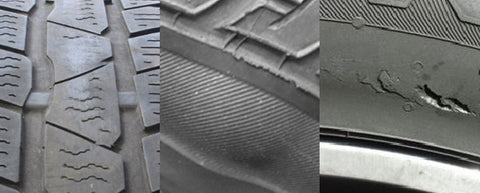Menu
-
- Sedans & Hatchbacks
- Small Crossovers (CUVs)
- Large Crossovers (SUVs)
- Sports Cars
-
Other Models
-
Wheels & Tires
- Lifestyle
-
Detailing
- Mazda Added Protection
-
- 1-833-509-1460
- Login
-
Canada (CAD $)

Sedans & Hatchbacks
Small Crossovers (CUVs)
Large Crossovers (SUVs)
Sports Cars
How GOOD Are Your Tires? 3 Useful Things to Check.
November 23, 2018 2 min read
Winter is fast approaching as we start to see the huge drop in temperatures and flurries. But before you rush to get your winter tires on, make sure you thoroughly inspect your tires (and your spare tire!) or have a professional look at them
Here's a quick inspection checklist of 3 major areas to help you determine if your tires are fit for the winter. Not only will it help prevent accidents, but it will also decrease the chances of being stranded in winter weather.
Want a printable version? Scroll to the bottom and save the image, or download the pdf version here!
1. Tire Tread
How much tread do you have left? If you don't have a tread depth gauge, you can use a toonie as a reference.
10/32nds is the tread for new tires. At 4/32nds, your tires are worn and you should consider replacing them. 2/32nds (1.5mm) or when the tread wear indicators touch the road indicates that your tires are bald. They are legally unsafe for road use.

How to place the tread depth gauge.
2. Visual Inspection
Inspect your tires all around for signs of abnormality such as cracks, bulges, nails, exposed inner cords or cuts. Nails and small objects, if found early, could be removed and repaired depending on severity and location.
As tires age, you will notice cracks along the sidewall. Cracks are caused by exposure to sunlight, the elements (excessive heat, weathering) and chemicals. When there's excessive cracking, or if you can see the underlying belts, you will need new tires.
A bubble or bulge indicates that the inner lining was damaged by an impact (curbs, potholes, railroad crossings etc) or it could be an indication of a tire structural failure.
Take notice of the wear on your tires. Different types of wear (Cupped, Center, Shoulder, Toe etc.) could indicate different problems (inflation issues, alignment issues etc.)


Examples of things to look out for.
3. Age
Even if your tires look good or if there's still lots of tread left, the age of your tire is equally as important. Tires will deteriorate with age regardless of usage, and the rubber will harden, leading to a decrease in performance and traction. Aged tires are more prone to cracking and may fail unexpectedly.
Aged tires should be thoroughly inspected every year. Manufacturers recommend replacing tires that are 6 years of age from the manufacture date. Tires and spares should not be older than 10 years. You can view the date of manufacture (DOT) on your tire's sidewall. Look for a series of 4 letters. The first 2 represent the week of manufacture, and the last 2 digits represent the year of manufacture.

How to read your DOT number.
If you're unsure of the condition of your tires, have them checked out by a professional. Looking for a specific tire or do you want some awesome recommendations? Contact us here!
Check out our collection of beautiful Mazda Wheels here!
Check out our collection of Mazda Winter Tire Packages here!
Check out our collection of Mazda All Season Tire Packages here!
















